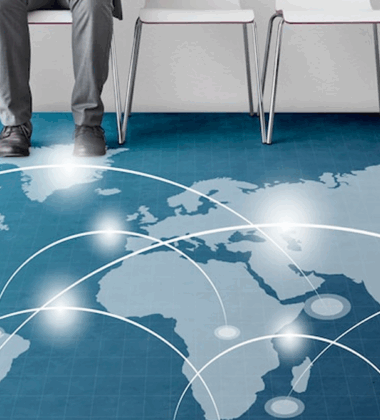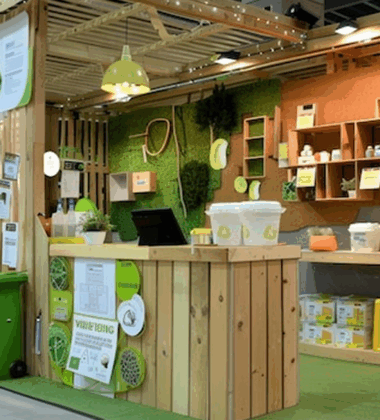Trade shows are no longer just brand awareness events—they’re high-stakes arenas where consumer expectations, speed, and precision logistics determine who wins and who fades into the crowd. For food and beverage brands, this means one thing: your success depends on what happens after a visitor samples your product.
From order capture to doorstep delivery, every step must flow through a well-structured pipeline expo system that transforms interest into actual orders.
In this guide, we break down how to design an expo fulfillment pipeline that’s built for speed, scalability, and ROI—especially for those exhibiting at major events like the Food and Beverage Expo USA.
Why Your Fulfillment Pipeline is Your Hidden Growth Engine
The days of handing out business cards and hoping someone follows up are over. Today’s trade show visitors—buyers, distributors, chefs, or influencers—expect:
- Instant ways to request samples or place trial orders
- Fast and reliable shipping
- Personalized post-expo communication
- A smooth handoff from the expo floor to their office or kitchen
This is where a well-executed pipeline expo model can be the difference between a one-time taster and a long-term customer. The key? Thinking about fulfillment before the show starts.
Step 1: Map Your Pipeline Before the Show
To streamline fulfillment, you need to design the entire pipeline—step-by-step—well in advance. This includes:
1.1. Lead Capture Strategy
- Use tablets or QR code forms at your booth to collect visitor info
- Create custom fields to log sample requests or specific product interests
- Sync forms with your CRM or a fulfillment platform to reduce manual entry
1.2. Sample Allocation Plan
- Decide how many units of each product will be available for immediate dispatch
- Pre-kit sample bundles tailored to buyer types (e.g., retailers vs. foodservice)
- Tag samples by SKU, usage occasion, or dietary claim (gluten-free, organic, halal, etc.)
1.3. 3PL or In-House Fulfillment Setup
- If using a third-party logistics (3PL) partner, confirm warehouse space, timelines, and SLAs
- If handling in-house, ensure a staging area is ready for immediate post-expo dispatch
- Build out a fulfillment dashboard to monitor order status in real time
Step 2: Capture Leads + Orders Onsite the Right Way
Booth staff must be trained to move visitors from interaction to action. Here’s how to set that up:
2.1. Pre-Built Forms with Routing Logic
- Create digital forms that auto-route requests based on visitor type:
- Media = press kit request
- Distributor = full line sample request
- Retail = category-specific SKU tasting
2.2. Immediate Confirmation
- Send instant emails confirming sample request with a delivery ETA
- Add links to product pages, allergen details, or recipe ideas
2.3. Priority Tagging
- Assign urgency levels or tags in your CRM so sales or operations teams know which leads to fulfill first
Step 3: Fulfillment & Follow-Through Post-Expo
Once the show ends, the race to deliver begins. Your pipeline must move fast—without breaking.
3.1. Batch Processing of Sample Orders
- Upload all lead data to your fulfillment tool
- Group shipments by priority, product type, or destination region
- Use barcode scanning or lot tracking for traceability
3.2. Brand the Unboxing
Even if you’re sending samples, this is your first tangible brand experience post-show. Don’t treat it like a generic parcel.
Best practices:
- Include custom inserts or a printed thank-you message
- Add QR codes linking to your “behind-the-booth” expo story or digital catalog
- Use packaging that reflects your brand’s food values—sustainable, elegant, or playful
3.3. Set Up a Follow-Up Trigger
- Once the sample is marked as delivered, your CRM should trigger a follow-up:
- “What did you think?” email
- Reorder discount code
- Calendar invite for a post-expo call
These follow-ups improve lead conversion and reduce time-to-close.
Step 4: Track and Optimize Your Pipeline Metrics
Without visibility into how your pipeline is performing, you’ll never know where you’re winning—or where you’re losing time and money.
Key Pipeline Expo Metrics:
| Metric | Why It Matters |
| Time from lead capture to sample shipment | Measures operational responsiveness |
| Sample delivery success rate | Highlights logistics accuracy and partner reliability |
| Post-sample engagement (email opens, clicks) | Gauges interest and sales-readiness |
| Sample-to-order conversion rate | Tracks true expo ROI |
| Cost-per-sample shipped | Helps manage overall fulfillment costs |
Review this data within 30 days post-show to update your process for future expos.
How 3PLs Help Scale Fulfillment Efforts
As your expo pipeline grows, managing fulfillment in-house may strain your team. That’s where 3PL (third-party logistics) providers come in.
Benefits of Working with a 3PL:
- Pre-show inventory staging
- Same-day dispatch post-show
- Temperature-controlled shipping for perishable items
- Automated tracking and returns
- Integration with CRMs, sampling platforms, or Shopify
Many exhibitors at the Food and Beverage Expo USA now partner with niche food-friendly 3PLs that understand dietary compliance, allergen labeling, and brand presentation requirements.
Real-World Example: The 5-Day Sample Funnel
Let’s say you showcased three new plant-based sauces at your Food and Beverage Expo USA booth. Here’s how a seamless fulfillment pipeline would look:
- Day 0 (Expo): Visitor tastes a sample → Scans QR code → Fills out form
- Day 1: Their data hits your CRM → Auto-confirmation sent
- Day 2: Sample box is kitted, labeled, and handed to courier
- Day 3: Sample is delivered → CRM triggers review email
- Day 5: Sales team follows up with order form or wholesale pricing
That’s a five-day cycle from first impression to tangible brand experience—setting you apart from slower competitors.
Avoid These Common Fulfillment Pitfalls
Even well-prepared brands can fall into logistics traps that hurt conversion. Here are a few to avoid:
- Over-promising delivery timelines without checking 3PL capacity
- Poor labeling or unclear allergen information on sample products
- No backup plan for missed shipments
- Failure to notify sales teams of sample deliveries
- Generic emails with no reference to the sample or booth conversation
Every breakdown in your expo pipeline is a lost opportunity—and a lost customer.
Build Your Pipeline for Repeatability
The true power of a pipeline expo model lies in repeatability. Once your system is built, you can:
- Replicate it at every trade show with minor tweaks
- Reduce manual work for your team
- Compare performance across events using standardized metrics
- Improve brand consistency and customer satisfaction
Treat your fulfillment pipeline like a product. Refine it. Automate it. Optimize it.
Final Thoughts: Logistics Can Be Your Competitive Advantage
Food and beverage trade shows like the Food and Beverage Expo USA are where reputations are built—but post-show execution is where deals are closed.
By investing in a streamlined, data-backed pipeline expo model, you:
- Shorten time-to-conversion
- Deliver a better experience to potential buyers
- Create a system you can scale and improve with every event
From sample to doorstep, every moment matters. Make sure your logistics are working as hard as your marketing team.





